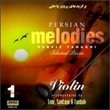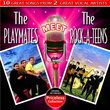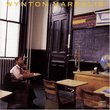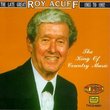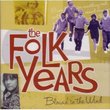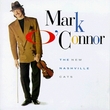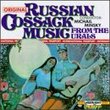| All Artists: Joaquin Rodrigo, Manuel Ponce, Luigi Boccherini, Federico Moreno Torroba, Federico Mompou, Mario Castelnuovo-Tedesco, Oscar Espla, Santiago de Murcia, Ludovico Roncalli, Luis de Milan, Gaspar Sanz, Dionysio Aguado, Fernando Sor, Isaac Albeniz, Enrique Granados, Johann Sebastian Bach, Enrique Jorda, Symphony of the Air Title: The Segovia Collection Members Wishing: 0 Total Copies: 0 Label: Deutsche Grammophon Release Date: 6/11/2002 Album Type: Box set, Original recording remastered Genres: Dance & Electronic, Special Interest, Classical Styles: Chamber Music, Forms & Genres, Concertos, Suites, Historical Periods, Baroque (c.1600-1750), Classical (c.1770-1830), Modern, 20th, & 21st Century, Instruments, Keyboard, Strings Number of Discs: 4 SwapaCD Credits: 4 UPC: 028947143024 |
Search - Joaquin Rodrigo, Manuel Ponce, Luigi Boccherini :: The Segovia Collection
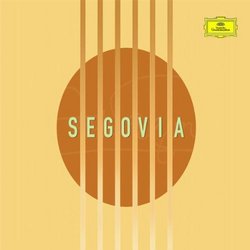 | Joaquin Rodrigo, Manuel Ponce, Luigi Boccherini The Segovia Collection Genres: Dance & Electronic, Special Interest, Classical
The vastly improved sonics which the Deutsche Grammophon production team achieves with its 24/96 remastering of the guitarist's 1952-1969 mono and stereo performances for Decca allow listeners to finally experience the r... more » |
Larger Image |
CD DetailsSynopsis
Amazon.com The vastly improved sonics which the Deutsche Grammophon production team achieves with its 24/96 remastering of the guitarist's 1952-1969 mono and stereo performances for Decca allow listeners to finally experience the rich tonal palette and intimate nature of Segovia's performance art in a manner commensurate with the fidelity of the original LP releases (minus the edgy digital glare and graininess of the MCA reissues). What emerges is a portrait of the artist as a lightning rod for great composers, such as Manuel Ponce, Federico Torroba, Mario Castelnuovo-Tedesco, Isaac Albéniz, and Enrique Granados, all of whom enriched the 20th-century repertoire of solo and chamber works by custom-crafting works for this innovative guitarist (Segovia's interpretation of Joaquín Rodrigo's "Fandango" is a paradigm for his role in popularizing the modern Spanish idiom). Likewise, Segovias's work as an arranger in recasting baroque and medieval works for modern guitar, as well as his deep affection for 19th-century masters of the instrument such as Dionisio Aguado and Fernando Sor, shines forth on discs two and three. However, it is Segovia's romantic touch in transposing Bach's Partitas for Solo Violin--as on his virtuoso turns on the "Chaconne in D Minor"--that best illustrate his poetic conception of the instrument. --Chip Stern Similar CDs
Similarly Requested CDs
|
CD ReviewsBeautiful selection of the decca segovia drollere | Sebastopol, CA United States | 10/02/2003 (5 out of 5 stars) "there probably wasn't a classical guitarist alive in the 1950's and 60's who didn't know by heart all of segovia's decca albums and julian bream's spectacular recordings for rca and westminster. this set will be a stroll down memory lane for everyone with segovia schott editions in the attic, and essential listening for anyone interested in the classical guitar or in discovering a genuine musical genius -- the equal on his instrument of casals, rubenstein or heifitz on theirs.segovia literally created the 20th century classical guitar out of an instrument with a cachet not far above the banjo. the booklet to the boxed set gives a fine overview of segovia's career and recording practice, though omitting many key details. (segovia innovated guitar concerts in large concert halls because he was among the first to use his fingernails, rather than bare fingertips, to pluck the strings, and pushed guitar makers to build larger, brighter and more sonorous instruments.) each of the 4 separately cased cds generously samples (up to 80 minutes each) from (1) the guitar concerto; (2) 20th century compositions dedicated to segovia; (3) pieces for lute, vihuela and 19th century guitar, with some albeniz transcriptions thrown in; and (4) segovia's transcriptions of pieces by j.s. bach. the digital sound in these recordings (almost all from the 1950's) is really superb, giving contour to every detail of the master tapes. it also reveals the changing recording standards of the early lp: though the sound is consistently vivid and balanced, the guitar is sometimes distant and echoy (a "tile bathroom" sound characteristic of the earliest lp's), or intimate but slightly muffled, or bright and contrasty with a hint of added reverb at the top. i was a little taken aback by the uneven dynamics and nail clatter that i hadn't noticed years ago in segovia's playing: modern recording and performance practice have changed expectations toward a more homogenous and finished sound. but there is a spontaneity, fire, grace, color, imagination and wit in segovia's playing that you won't find anywhere else ... well, excepting julian bream. it's picky to second guess editorial decisions in a set as generous as this ... but what the heck: i really missed tansman's lovely suite of polish dances ("cavatina"), regretted the absence of a complete sonata or suite by manuel ponce, and would trade the boccherini "guitar" (transcribed cello) concerto for the castelnuovo-tedesco guitar concerto. that said, the performances here of rodrigo's "fantasia para un gentilhombre" and ponce's "concerto del sur" are among the best available, and the generous sampling sor etudes will remind all us graying guitarists of the many happy hours we spent practicing these pieces from the only edition then available -- segovia's own. deutsche grammaphon has also released a 2-cd set of segovia recordings ("the art of andres segovia"), which duplicates only four pieces from this 4-cd boxed set, and veers more toward colorful transcriptions and single movement selections from longer works. together they make a 6 cd collection of many of the finest recordings by the man who started it all, spawned thousands of heirs and imitators -- and set the bar for them very, very high." There's Only One Segovia John L. Anderson | Lynchburg, VA United States | 07/19/2002 (5 out of 5 stars) "This is the PERFECT retrospective boxed set. DG has outdone itself with this career retrospective of Spanish classical guitar legend Andres Segovia. The set was released on the 15th anniversary of Segovia's death in 1987. From the famous "Fantasia para un gentilhombre" to transcriptions of J.S. Bach for the guitar, all four CDs showcase nothing but the genius of Segovia. The remastered DG recordings sound terrific and the accompanying booklet, complete with photographs from throughout the master's life in Spain, is excellent. If you love Spanish classical guitar and adore the 19th-Century romantic style of playing championed by Segovia, buy this set. You won't be disappointed. VERY HIGHLY RECOMMENDED." The Great Master, of Masters Joxim G.P. | Morelia, Michoac�n, M�xico | 06/27/2005 (5 out of 5 stars) "Andrés Segovia was the great master of classical guitar. This set show us 400 years of music taken for the guitar, he was the first in give the guitar place like a cult instrument in 20th century through his works invaluable transcriptions of several instruments (cello, lute, etc.) of composers like Bach, Dowland, Manuel M. Ponce, Fernando Sor, Tárrega, etc.
The scope from Segovia has leaved footsteps in the great world of classical music, for his research and investigations about it. In this set we can listen pieces like "six pavanas" from the ending Age Middle of Luis Milán, and begginig of Rennasaince like Dowland's songs togheter Roncali Ludovico between others on CD 3. Also show us the great spanish composer Enrique Granados, Torroba, Sor, icons of guitar music. I Basically bought this cd for "Pavane" 1-6 and that better found it in this GREAT SET. If you're a lover of Classical Music, or classical guitar this one of the greatest set box ever made in any genre!!!. Andrés Segovia, Marquis of Salobreia, was born near Jaen, Granada, Spain. He became a guitarist against the double opposition of his parents. First, they opposed his learning the guitar and got him cello and piano teachers instead. When he persisted in teaching himself guitar, they opposed his becoming a musician. He sought a guitar teacher at the Granada Institute of Music when he studied there, but found none, so continued learning the instrument on his own. He made his debut at the Centro Artística in Granada at the age of 15. He played so skillfully that he was urged to become a professional soloist. He played in Madrid in 1912, at the Paris Conservatory in 1915, and in Barcelona in 1916, and made a wildly successful tour of South America in 1919. He made his formal debut in Paris on April 7, 1924, in a program which included a new work written for him by Albert Roussel, named Segovia. It was the first of many works which were written for him by distinguished composers, enriching the instrument's repertory as Segovia had elevated its artistic potential. His U.S. debut was at Town Hall, New York, on January 8, 1928. Being self-taught, his technique was unique. It was, in fact, superior to that which was being taught at the time, and extended the flexibility and expressive possibilities of the instrument. The main difference was in the method of using the right hand for strumming and picking the strings: Segovia's method paid much attention to the means of attack: whether hard parts of the fingers, fleshy parts, or the nails were used; other subtleties that affected the dynamics of the instrument; and an economy of motion that allowed longer and more sustained playing. There were classical guitarists before him, and distinguished ones even when he appeared, but it was not an instrument that was regarded as a serious vehicle for classical music. Segovia personally changed that, and not by accident. No doubt affected by his parents' attitude toward his chosen career, he had a driving desire to make it so. He wrote numerous transcriptions of older music for lute and for the Spanish vihuela. He transcribed music of Bach, Haydn, Mozart, Chopin, Handel, and others. He commissioned works by Castelnuovo-Tedesco (notably the great suite Platero and I), Falla, Turina, Tansman, Villa-Lobos, Torroba, Ponce, and Rodrigo, whose Fantasia para un gentilhombre was written for him. His reinstatement of the guitar as a solo instrument was sealed by his becoming one of the great teachers of music history. He established guitar schools or courses at the Accademia Musicale Chigiana, Siena, Santiago de Compostela, and the University of California in Berkeley. His students included Alirio Diaz, Oscar Ghilia, and John Williams. Segovia become one of the great names in classical music, whose mere name was enough to sell out houses worldwide. He received numerous awards and honors during his lifetime, including the Grand Cross of Isabela and Alfonso, the Gold Medal of the Royal Philharmonic Society of London, and many honorary degrees. The house where he was born had a commemorative plaque attached to it in 1969 proclaiming him the "leading son of the city." King Juan Carlos of Spain ennobled him as the Marquis of Salobreia in 1981, and in the same year a Segovia International Guitar Competition was established in his honor. He continued to give recitals and concerts until an advanced age, and had the rare opportunity, in 1984, of playing at a gala concert honoring the 75th anniversary of professional debut. " |

 Track Listings (10) - Disc #1
Track Listings (10) - Disc #1

